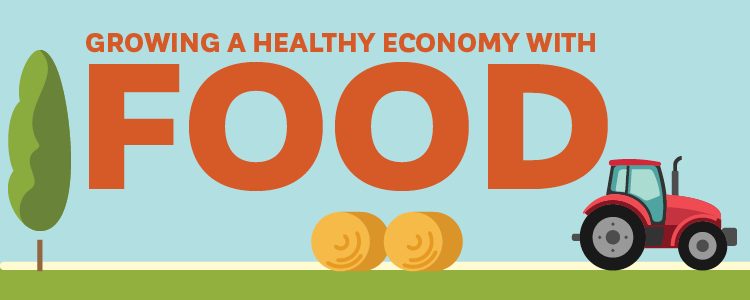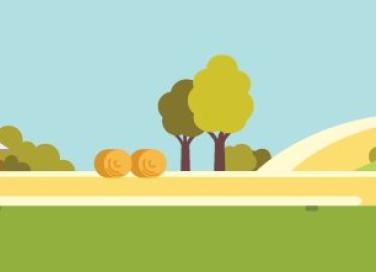


Sign-up for {N}power to get exclusive discounts, newsletters, members-only features, and more!


Each day brings with it hundreds of choices. They are mostly small and inconsequential—the blue shirt or the white one?—but others have the potential to effect real change. The food you purchase is one of these. Your food choices can be incredibly empowering—they are not up to politicians, policy makers, or pundits—they are yours and yours alone. And they can create a fundamental shift toward building a new food economy that benefits us all.
I think it’s safe to say that most of us like to think that the money we spend on food goes to the farmers and ranchers who produce it. Of course, that’s how it should be. The truth is that a handful of large corporations hold the reigns to our food system—they are also reaping the financial rewards. In many cases, small and mid-size family farms have been swept up into a system that resembles sharecropping, in which the farmer signs a contract with a large corporation that provides a product to grow—a good example of this is the poultry industry, in which contract farmers receive chicks to grow for the “parent” company—and the corporation dictates the prices and terms in which the farmers sell their crops or livestock (this is called “vertical” integration). Any resistance or objections from the farmer can result in the corporation withdrawing the product, leaving the farmer bound to a contract with nothing to produce, effectively putting him or her out of business. Recent efforts by the USDA and Justice Department to reign in the industry and protect farmers failed after major industry pushback.[fn value=1][/fn] [fn value=2][/fn]
The good news is that we are seeing a groundswell of consumers educating themselves about how and where their food was produced—and more importantly, they are using that education to inform their buying decisions. And a growing number of consumers are committed to supporting a food system that benefits not just the environment, but also the farmers who produce the food. The terms “organic” and “sustainable” are losing their elitism and moving into mainstream consciousness. And as consumer demand grows for sustainably-based agriculture, more farmers are answering that demand, radically changing how food is produced.
In general, areas with greater concentrations of industrial farms, including CAFOs (concentrated animal feeding operations), experience a decline in overall economic and community wellbeing[fn value=3][/fn], while communities that retain family-owned farms enjoy better economic and overall conditions. A landmark study by a USDA researcher conducted in the 1940s confirmed this even then. The study compared two agricultural communities in California—one was dominated by locally owned family farms, the other by large, absentee-owned, non-family farms. The community with larger, non-family farms had a smaller middle class, lower family incomes, and higher poverty rates. In contrast, the community with the greater concentration of family farms had a larger middle class and better socioeconomic conditions.[fn value=4][/fn] Modern-day studies have confirmed these findings.[fn value=5][/fn]
Recent research prepared by Penn State Agriculture Economist Edward Jaenicke, PhD directly links economic health to organic agriculture production. The research identified 225 counties in the U.S. as organic “hotspots”—counties with high levels of organic agricultural activity that also have neighboring counties with high organic activity—and looked at how these hotspots impacted specific economic indicators. Organic hotspots were found to increase overall median household incomes by more than $2,000 and lower the county poverty rates.[fn value=6][/fn] If this holds true for areas in the country that are deemed “organic hotspots,” imagine the economic impact this can have as these organic hotspots spread throughout the country; indeed, sustainable agriculture has the potential to improve the nationwide economy.
Sustainable practices such as integrated pest management, conservation tillage, and cover cropping can also benefit farmers by saving them money on inputs such as pesticides, fertilizers, fuel, and even labor costs,[fn value=7][/fn]while attributes like organic, non-GMO, and grassfed, fetch farmers a premium in the marketplace.[fn value=8][/fn] [fn value=9][/fn] [fn value=10][/fn] [fn value=11][/fn] [fn value=12][/fn] Organic farms can also provide quality jobs—a study from the United Kingdom found that organic farm workers reported being happier compared to conventional farm workers.[fn value=13][/fn]
While “Big Food” still holds much of the power in our food system, we are seeing an alternative food economy emerging. Increasing sustainable food production is directly related to consumers making informed buying choices. When you purchase foods that are organic, non-GMO, pastured, grassfed, and free range you are actively encouraging the growth of a more sustainable food system in which we can all benefit.

Organic and naturally raised is trending, which has allowed a lot of conventional big box retailers and pseudo natural markets to take advantage of the trend. Natural Grocers has always been fully committed to supporting and partnering with farmers, ranchers, and other producers who use sustainable practices, helping their businesses thrive. We've been doing so since 1955. When you buy from us, you can do so with confidence that you are buying from a company that has always been 100% committed to sustainability. We don't follow the trends—we start them.
While our food choices can drive important economic changes, they are also important in supporting a healthy environment. In fact, the two are intimately connected—without a healthy environment, there cannot be a thriving economy. History has shown us that environmental destruction ushers in poverty, famine, poor health, and conflict, none of which are conducive to a thriving economy. But each time you buy certified organic, non-GMO, pastured, or grassfed from a sustainability-committed retailer like Natural Grocers, you are at once growing a healthy economy and encouraging agricultural methods that promote soil health, clean air and water, and biodiversity. That’s good news for everyone!
Sustainable agricultural practices are known to improve a number of markers of environmental health, including an increase in biodiversity, pollinator health, soil health, and carbon sequestration, and now a probable increase in rainfall can be added to the list, as reported by Beef Producer, a trade publication for the beef industry. It is widely accepted that much of the earth’s rainfall comes from evapotranspiration, the process by which water is transferred from land to the atmosphere by evaporation from soil and transpiration from plants. New satellite data from NASA show that soil can hold rainwater longer than once thought. Larger amounts of soil organic matter (i.e., healthy soil) can hold more water, providing more water for the process of evapotranspiration, increasing the potential for more rainfall. According to the report, “This is exciting because it strongly suggests grazing and farming that builds soil is not only directly beneficial to those practicing it for higher yields, lower inputs, more profit, and more drought resiliency, it also appears it helps make more rain for everybody.”[fn value=14][/fn]



Sign-up for {N}power to get exclusive discounts, newsletters, members-only features, and more!